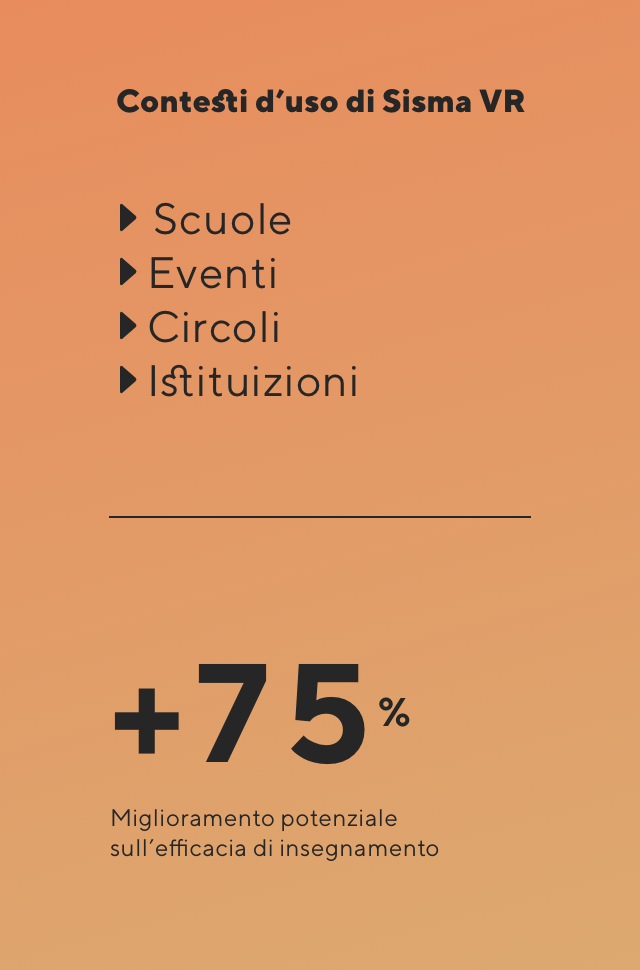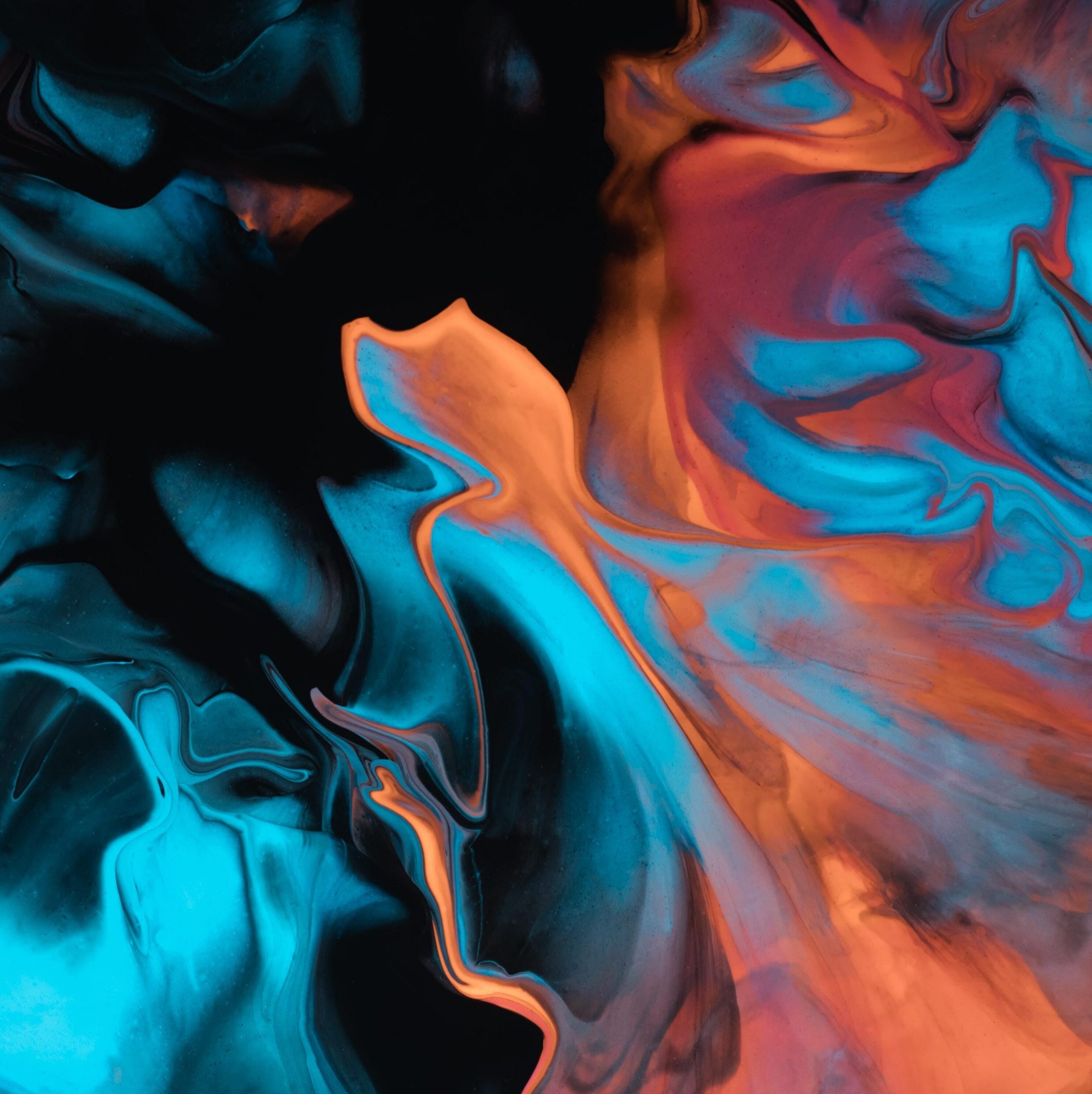CHALLENGE
To develope impactful and effective training using a tool that immerses people in a context too dangerous to replicate in real life.
SOLUTION
A Virtual Reality Experience that realistically replicates the effects of an earthquake and guides people in learning the correct behaviors to adopt.
Lares: a forge of skills
Lares Italia is an association that involves students and graduates directly connected or related to Civil Protection. Its mission is to promote information, training, updating and intervention activities in emergency situations in this field.
To illustrate to the public the risks resulting from earthquake tremors, Lares Italia uses tools such as informative leaflets and video contributions. The association approached Uqido to identify new and more effective training and awareness tools on the effects of an earthquake and guidelines to minimize the risk for people.
Lares Italia
National Union of Graduates Experts in Civil Protection
An association registered in the Central List of National Organizations for Civil Protection at the Department of Civil Protection, Presidency of the Council of Ministers.
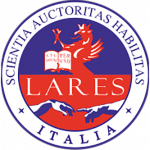
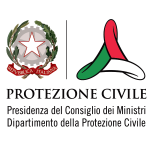
IMPACT
Virtual Reality and education |
A great opportunity
Immersive Technologies can improve education and training, achieving significantly better results than traditional methods.
Virtual Reality allows the recreation of dangerous situations that are not easily reproducible in complete safety and, thanks to its ability to engage more senses of the human body, it transmits to the user the sensation of being present in the virtual scene and space.
From a behavioral point of view, several studies reveal that virtual training environments (VTEs) significantly enhance active learning experiences by providing realism and interactivity. Additionally, VTEs facilitate consolidation of information in memory and the transfer of knowledge, meaning the application of learned knowledge and skills in real-life contexts.
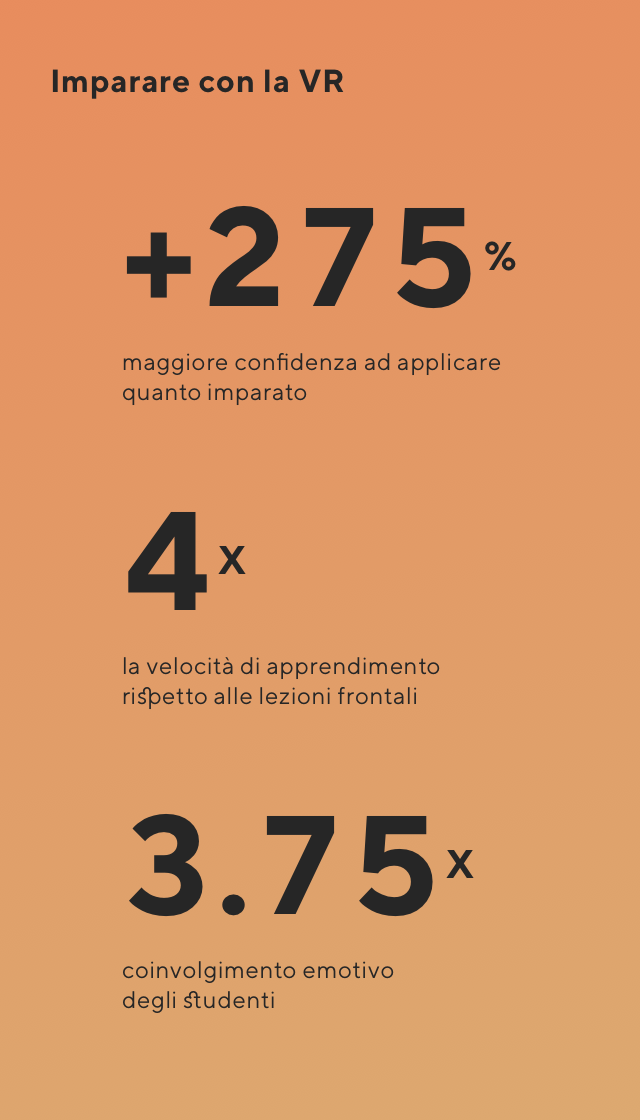
Experiencing an earthquake with Sisma VR
The carefully crafted storytelling in Sisma VR recreates an earthquake scenario in a daily life situation, where the user could potentially be involved.
The experience places the user inside an apartment on the fourth floor of a building. The user can freely walk around and explore the room, to feel the context as natural as possible. A narrator’s voice invites the user to prepare a cup of tea by grabbing the teapot and turning on the stove. This seemingly minor action positions the user in a specific part of the scene before the earthquake event starts.
Suddenly, the user experiences an earthquake shake: the walls move, objects start falling to the ground. After the earthquake ends, everything returns to its original position, and the user is asked to secure them to the walls to reduce potential damage.
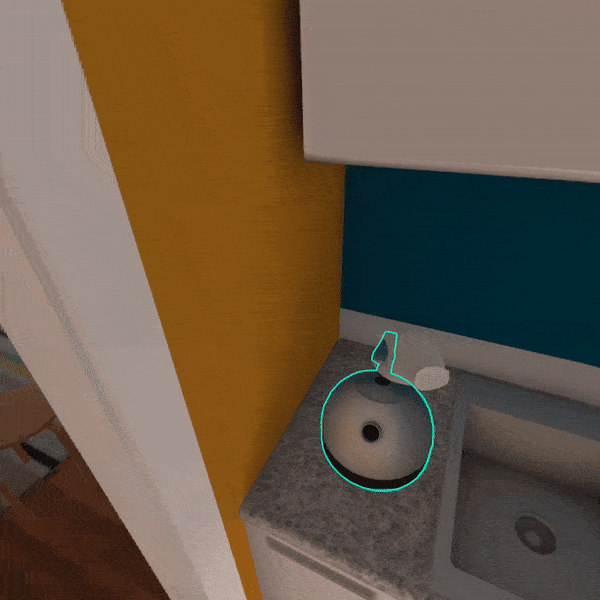
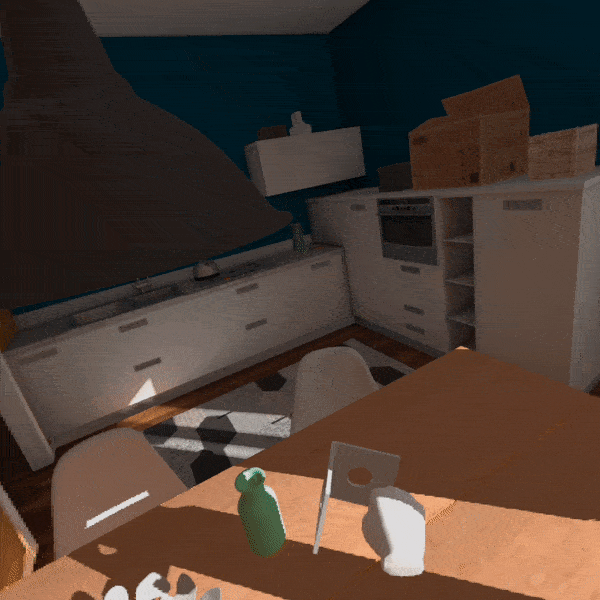
This last request is one of the small details that reduces the possibility of experiencing significant damage. In this way, Sisma VR achieves its purpose and makes the user understand that, in case of low-intensity earthquakes, the worst damages are due to a lack of respect for simple but vital prevention rules.
Technology and know how
During the development of the virtual experience, we encountered challenges that allowed us to question some of the main paradigms of the Virtual Reality Experience, such as:
- The need to avoid motion sickness;
- The simulation of the vibration of the room floor where the user is, while trying the experience;
- Finding suitable solutions for a stand-alone headset with limited computing power available;
- Accurately recreating the sounds of an earthquake.
We conducted several User Testing sessions, measuring the impact of the virtual experience on users, and thus identified the most suitable movement that did not cause nausea to the user.
To simulate the earthquake shake, we adopted a technique used in the film industry: the cameraman shakes the camera with the intention of tricking the audience into thinking that the surrounding environment is moving. In this way, it is not necessary to move and rotate the 3D room, but we act directly on the user’s point of view, i.e., the virtual camera. This technical choice also allowed us to pre-calculate the light bounces on static 3D objects, achieving a more realistic effect and rendering.
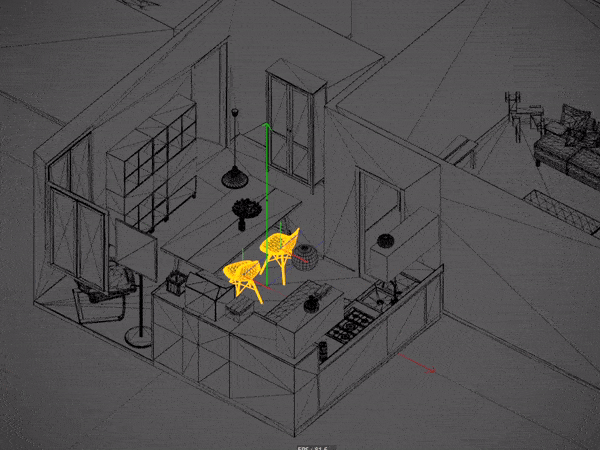
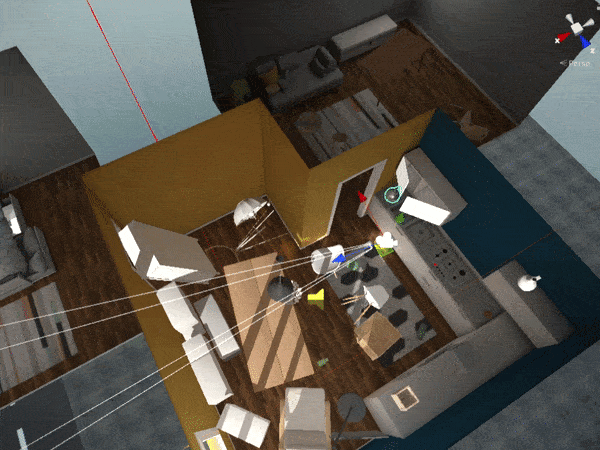
The sound design was fundamental, as it allowed us to realistically recreate sounds that characterize each phase of the earthquake: from the initial roar to the noise of objects falling to the ground. To further immerse the user in the virtual scene, we also recreated sounds from outside the room; for example, car alarms parked along the street start ringing during the earthquake shake.
Another element that characterizes Sisma VR is the level design. The accuracy of sensory stimuli (narrative voice and visual inputs) and careful calibration of elements (storytelling and environment) ensures that the user is always in the best position in the virtual environment. Freedom of action and movement is guided in a natural way, as is in video game design.
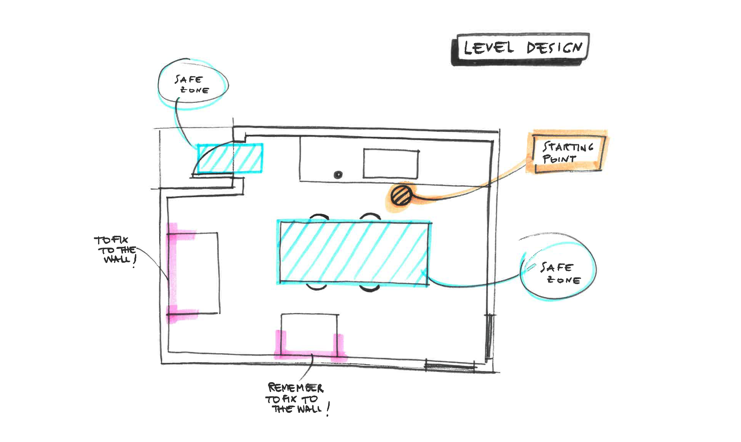
We have created an experience that has given us the opportunity to rethink some of the established rules of virtual reality development. Using new technologies with limited processing power is a challenge that requires a lot of ingenuity, much like the early days of video game development: with only a few megabytes available, developers did their best to create something fantastic.
Giacomo, XR Technical Lead
What we have learned
The rules of Virtual Reality experiences are still evolving: there is still a lot of room for finding new guidelines and experimenting with new solutions.
The most illustrative example is the measures taken to avoid motion sickness, tested on different types of people. It is essential to have continuous support and feedback from the experts at Lares: their skills for prevention and seismology have allowed the Uqido team to understand the context and create a faithful and realistic experience.
